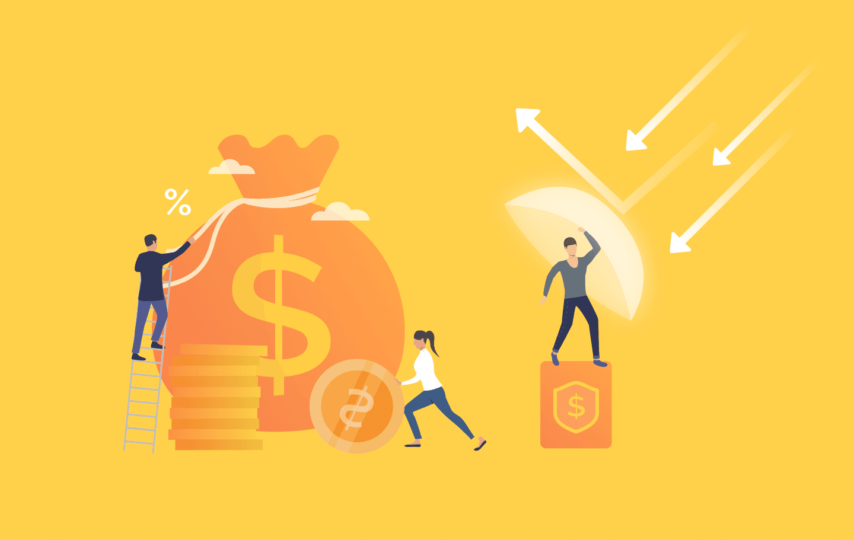As an e-commerce store owner, PayPal chargebacks are probably something you’re familiar with. With this in mind, it’s understandable why many of us may worry about them and feel powerless against their detrimental effects when they occur.
The truth is, however, that PayPal chargeback disputes can happen for a variety of reasons — some within our control and some out of our hands — which makes the challenge of preventing or resolving these issues even more complex.
In this blog post, we’ll discuss the depth and breadth of PayPal chargebacks, including causes, prevention tips, resolution strategies and more so you’re better equipped to confidently ship products to your store without the fear that comes with handling dispute cases.
Understanding PayPal Chargebacks
PayPal chargebacks are a process where a buyer initiates a dispute with a transaction in their PayPal account. This dispute can occur for various reasons such as the item not being received, the item not being as it was described, unauthorized transactions, and many more.
PayPal chargebacks are a safety net for buyers to make sure they receive what they pay for. In the event of a chargeback, PayPal investigates the case by gathering information from both the buyer and the seller. PayPal then makes a decision on whether to refund the buyer or not.
As an intermediary between the buyer and seller, PayPal plays a crucial role in the chargeback process by ensuring that both parties are treated fairly and any fraudulent activity is addressed promptly. As a seller, it is essential to understand PayPal chargebacks to better protect yourself and your business from potential disputes.
Common Types of PayPal Chargebacks
As one of the most popular payment methods for online purchases, PayPal aims to provide a safe and secure platform for its users. However, there are instances when chargebacks occur, particularly when issues arise with transactions.
Some of the most common types of PayPal chargebacks include unauthorized transactions, where a user’s account is accessed without their consent, and items not received, where a buyer claims that they did not receive the purchased item.
Another chargeback is the item is significantly different, which happens when the received item is not as described or significantly different from what was presented in the listing. Likewise, the credit not processed chargeback happens when a buyer requests a refund or a credit but does not receive it.
While duplicate transactions occur when multiple payments for the same transaction are made. Understanding these different types of chargebacks can help buyers and sellers alike to take necessary precautions and minimize the likelihood of encountering such issues.
The Consequences of PayPal Chargebacks
PayPal is undoubtedly a convenient way of transacting online, but there is always a risk of chargebacks that can have severe consequences. Chargebacks, which occur when a buyer opens a dispute with PayPal over a purchase, can have a considerable financial implications on online stores.
Not only do they lose the total amount of the transaction, but they may also face penalties and fees if their chargeback rate exceeds the acceptable threshold. The worst part of having a high chargeback rate is that it can damage the store’s reputation and customer trust.
It could result in losing critical sales and long-term customers. A higher number of chargebacks can also cause PayPal to limit the store’s account or close it down entirely, meaning that the store will not be able to transact on the PayPal platform anymore.
With this in mind, it’s crucial that online sellers take necessary measures to minimize the occurrence of chargebacks and maintain the integrity of their PayPal accounts.
Preventing PayPal Chargebacks
PayPal chargebacks can be a headache for any business, and prevention is much more cost-effective and efficient than resolving them. One of the ways to avoid chargebacks is to have a clear return and refund policy. This policy should be easy to find on your website and transparently communicate the conditions for refunds or exchanges.
Along with a good policy, providing accurate product descriptions and images is also essential. This will ensure that customers know exactly what they’re purchasing and set realistic expectations. Another critical component of chargeback prevention is monitoring transactions and looking for suspicious activities.
It’s important to be proactive in identifying any issues and resolving them before they escalate. Promptly responding to customer inquiries and complaints is another way to prevent chargebacks. A good customer support system can help you answer questions and quickly address any issues that customers may have with their purchases.
Finally, using fraud detection tools and services like PayPal Seller Protection is an excellent way to prevent chargebacks. This way, you can feel more confident that your business is protected against fraudulent activity. By following these tips, you can significantly reduce the risk of chargebacks and protect your business’s finances.
How to Handle PayPal Chargebacks
PayPal chargebacks can be a frustrating experience for any online seller, but the key to resolving these disputes is knowing how to handle them properly. The first step in responding to a chargeback is to gather as much evidence as possible to dispute the claim.
It may include order details, shipping confirmation, and communication between the seller and buyer. Once the required evidence is collected, the dispute process can begin.
Typically, the seller has up to 10 days to submit evidence to PayPal. It is important to keep in mind that if the seller does not respond to the chargeback within the given timeframe, the funds will automatically be refunded to the buyer.
When disputing a chargeback, it is best practice to remain professional and provide comprehensive evidence to support their case. By following these tips, online sellers can better navigate the chargeback process and ultimately avoid unnecessary monetary loss.
Final Thoughts
Now that you have a better understanding of PayPal chargebacks and what steps you can take to prevent them from happening, it is crucial that merchants make the most of the mechanisms and best practices mentioned in this post.
Doing so will ensure that they are doing everything they can to protect their business against chargeback fraud and other associated risks. Furthermore, if chargebacks do occur, being aware of PayPal’s processes and the proper way to respond will help merchants manage the situation efficiently and effectively.
With comprehensive knowledge of the subject compounded with an understanding of how to effectively work with dispute management systems, merchants will be able to remain compliant while minimizing losses related to chargebacks.








